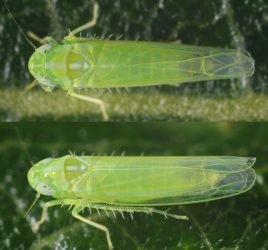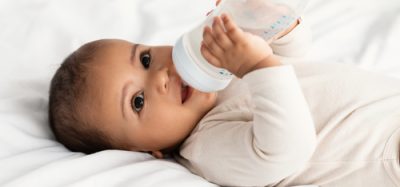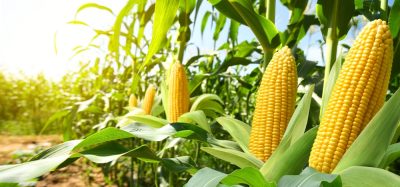USDA-ARS develops leafhopper- and drought-resistant bean
- Like
- Digg
- Del
- Tumblr
- VKontakte
- Buffer
- Love This
- Odnoklassniki
- Meneame
- Blogger
- Amazon
- Yahoo Mail
- Gmail
- AOL
- Newsvine
- HackerNews
- Evernote
- MySpace
- Mail.ru
- Viadeo
- Line
- Comments
- Yummly
- SMS
- Viber
- Telegram
- Subscribe
- Skype
- Facebook Messenger
- Kakao
- LiveJournal
- Yammer
- Edgar
- Fintel
- Mix
- Instapaper
- Copy Link
Posted: 9 April 2020 | Sam Mehmet (New Food) | No comments yet
The new bean is a type of pinto bean – a common target of leafhoppers – which are considered a vital crop, accounting for more than a third of all edible dry beans produced in the US.


Seeds of the new leafhopper and drought resistant pinto bean, called TARS-LH1. Credit: Tim Porch
In temperate areas, leafhoppers can cause bean crop losses of up to 20 percent, and in tropical areas, infestations can lead to crop losses of more than 75 percent.
In a new study, Tim Porch from the USDA-ARS Tropical Agriculture Research Station in Mayagüez, Puerto Rico, and his team, have described a new pinto bean, called TARS-LH1, which is said to have increased resistance to leafhoppers, as well as high yield and drought tolerance.
“Continuous improvement of common beans is necessary,” Porch said. “That’s because pathogens, pests, the environment and the market are continuously changing and evolving.”
Pinto beans are targeted by two different species of leafhoppers. One species – Empoasca fabea – predominates in temperate areas, and nother species – Empoasca kraemeri – is the main pest in tropical areas.
TARS-LH1 is resistant to both kinds of leafhoppers.


“Since this pinto bean was tested over several years in different locations, we confirmed that it has resistance to both species of leafhoppers,” Porch explained. “It also has broad adaptation to different climates.”
One of the key challenges during the field tests was said to be accurately collecting data to measure leafhopper damage, which is key to verifying whether specific varieties of beans are resistant to these pests.
The leafhoppers feeding of plant sap causes damage, called hopperburn. Hopperburn can include leaf burn, which turns leaves yellow, particularly at the tip and around the edges. It can also include leaf curl which causes entire leaves to curl down.
The researchers counted the numbers of leafhoppers and flightless leafhopper nymphs on common bean leaves. They also evaluated leaf burn and leaf curl symptoms.
“By combining the careful and laborious counting of pests with a rapid evaluation of leaf damage, we were able to estimate leafhoppers per plant for a large number of plots and trials,” Porch noted. As a result, the researchers were able to show that the TARS-LH1 pinto bean is resistant to leafhopper attacks.
TARS-LH1 is also said to be drought tolerant, which often occur simultaneously with leafhopper infestations. “Since TARS-LH1 combines drought tolerance with the leafhopper resistance, it provides a key combination of traits,” Porch said.
“TARS-LH1 could contribute to reducing these major inputs in common bean farming. It could also increase the production of organic beans.”
Porch and colleagues are still reportedly working on breeding newer, better varieties of beans. “We want to include additional traits, such as heat tolerance and resistance to pathogens like rust and common bacterial blight, along with the leafhopper resistance,” he said.
“Ultimately, our goal is to generate broadly resilient and productive common beans.”
Related topics
Food Security, New product development (NPD), Research & development, Sustainability









